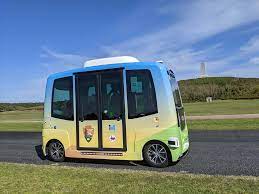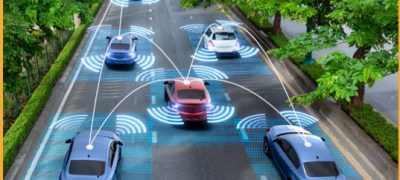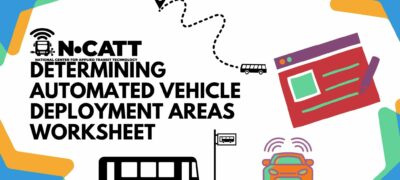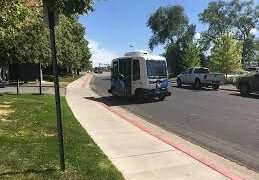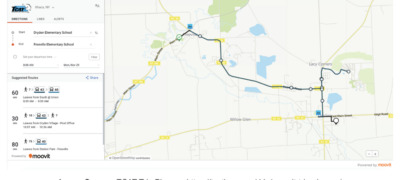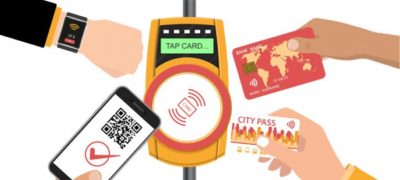A newer related resource on automated vehicles can be found here.
Autonomous vehicles (AVs) can use connected vehicle technology and sensors to detect the environment and safely operate with little to no human control. Connected vehicle technology allows vehicles to “talk” with each other and infrastructure. This fact sheet provides an overview of the levels of automation, benefits and concerns of deploying AVs, a map of where AV transit projects have been piloted in the United States, and presents a case study on the highest level of automation in transit in the United States (US).
Levels of Automation
According to the Society of Automotive Engineers (SAE), there are five levels of Automation for AVs, ranging from no automation to fully automated. Most vehicles on the market today, such as those by Tesla, do not exceed level 2 automation. Some cities and transit systems around the United States are taking the lead in the transit world by deploying level 4 autonomous shuttles as demonstration projects.
0- No Autonomy
There are no autonomous features; everything is controlled manually by a driver.
1- Driver Assistance
The vehicle has one automated system that provides steering or braking and acceleration assistance, but the driver is still controlling the vehicle and must be alert at all times.
2- Partial Automation
The vehicle has at least two automated systems and can control both steering and acceleration/deceleration. There is still a person in the driver’s seat who monitors all tasks, must remain alert at all times, and can take control of the vehicle at any time. Some examples of automation include adaptive cruise control, lane centering, parking assistance, and lane-following assistance.
3- Conditional Automation
Under certain circumstances, such as driving straight along a highway, the vehicle will drive autonomously. Drivers can temporarily turn their attention elsewhere or takes their hands off the wheel, but once a more complicated scenario pops up, such as navigating roadwork or taking an exit ramp, the vehicle hands back control to the driver.
4- High Automation
The vehicle operates in self-driving mode and performs all driving tasks, but a person is on board to manually override the system if needed. The safety driver is usually not necessary as the vehicle can maneuver itself to a safe space.
5- Full Automation
The vehicle performs all driving tasks under all conditions and requires no human attention or interaction. There isn’t even a steering wheel or gas and brake pedals.
Benefits
- Decrease in vehicle crashes and traffic-related deaths and injuries
- Decease in passenger injuries from sudden stops for smaller vehicles.
- Better ADA access due to a consistent curb approach
- Better schedule adherence
- Reduced traffic delay from crashes and elimination of
stop-and-go creates faster travel times - Provide better data to enhance operational
performance - Increase in mobility in difficult to serve areas such as low-density environments and in off-peak periods.
- Increased mobility for seniors.
Concerns
- Government regulations
- Cybersecurity and data privacy
- Increased vehicle and infrastructure costs
- Job loss for operators
- Passenger assistance and safety – lack of assistance from operators
- Public perception
- Enforcement (e.g., how does an officer pull over an AV?)
- Increased urban sprawl
Case Study
The Connecticut Department of Transportation (CTDOT) will be the first to pilot full-sized, heavy-duty, 40′, level 4 autonomous transit buses in revenue service. The pilot project will deploy three autonomous electric buses along CTfastrak, a 9.4-mile limited-access busway. The autonomous technology will operate the vehicle while it is on the busway with an safety driver on board who will take control on local streets. The safety driver will also take over control if the system disengages or is unable to operate in certain conditions (e.g., bad weather).Some areas of focus for the project will be automatic docking, autonomous vehicles operating in tandem, and communication with the traffic signal at an intersection. Buses will be delivered for testing in Fall of 2022 .
